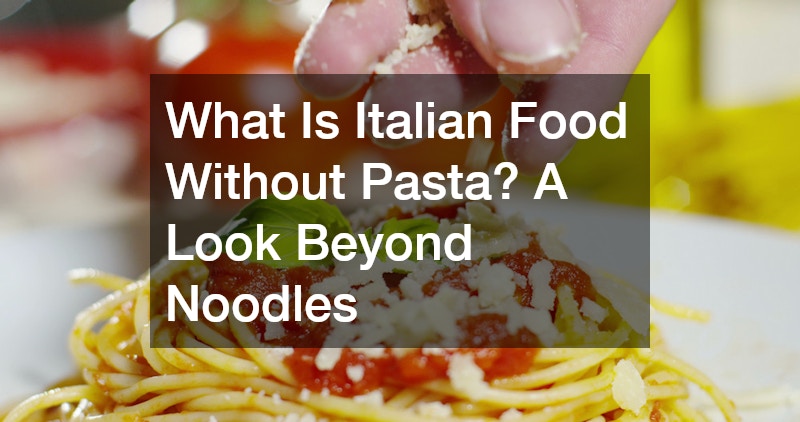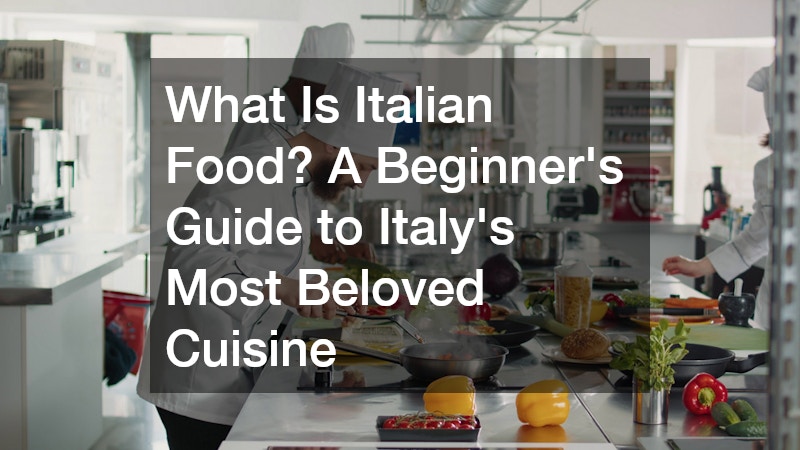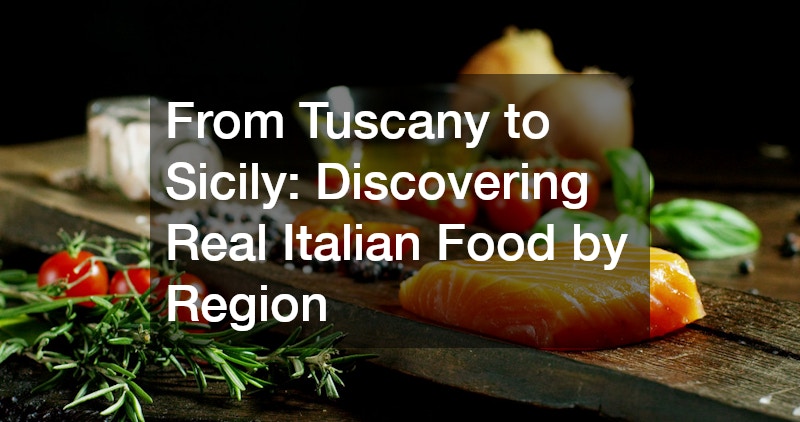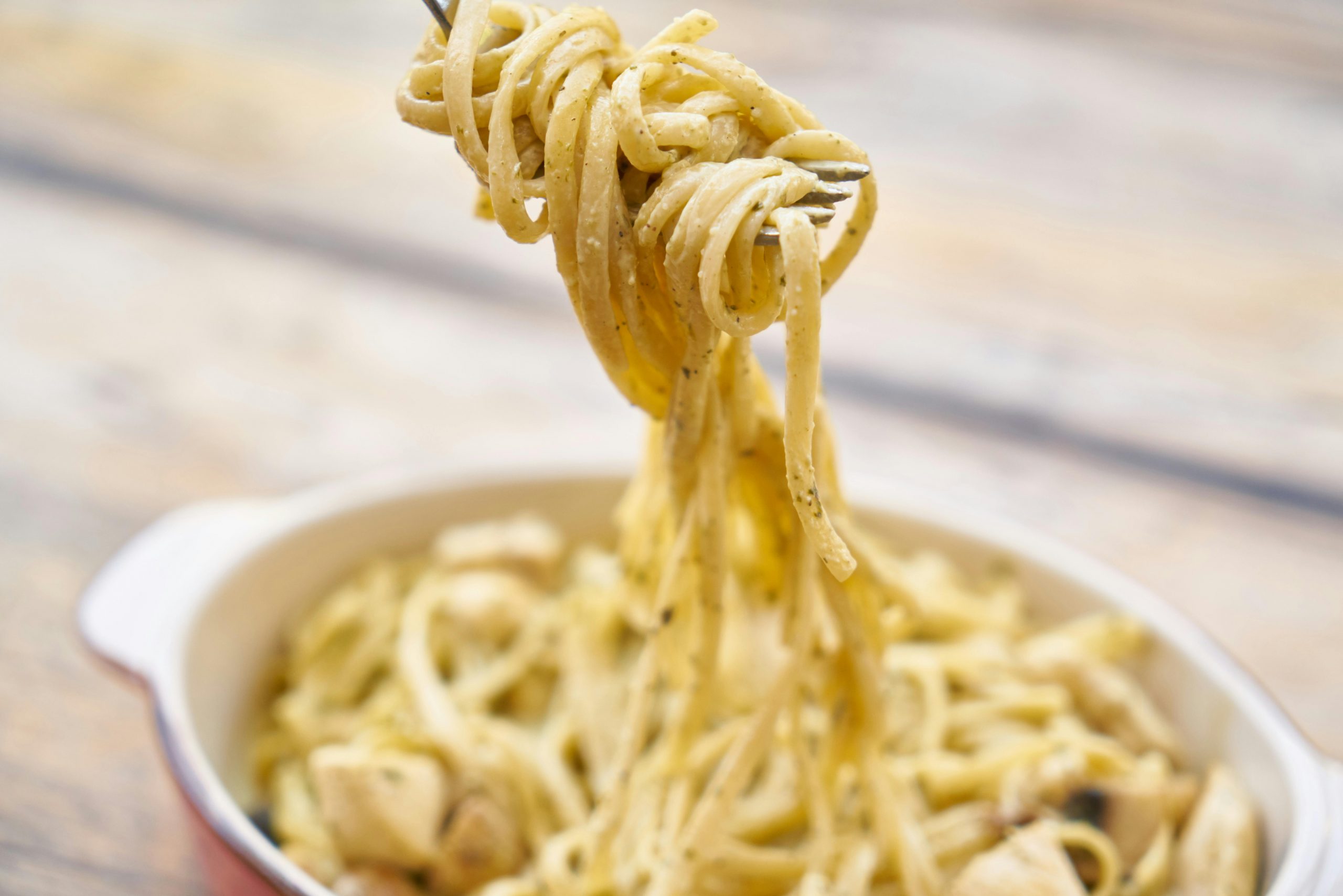
Italian food is arguably one of the most beloved and recognized cuisines in the world. From the hearty pasta dishes of the north to the olive oil-rich plates of the south, Italy’s culinary traditions have transcended borders and captured the hearts (and stomachs) of foodies everywhere. But what is Italian food, really? Beyond pizza and spaghetti lies a diverse culinary heritage shaped by regional differences, local ingredients, cultural traditions, and centuries of innovation.
For curious food lovers and aspiring home chefs, understanding the essence of Italian cuisine opens the door to a flavorful journey filled with simplicity, freshness, and passion. This guide explores the foundations of Italian food, regional differences, signature dishes, and tips to appreciate (and recreate) authentic Italian meals.
What Defines Italian Food? Simplicity, Seasonality, and Soul
At its core, Italian food is defined by a few simple yet powerful principles: use fresh, local ingredients; let flavors shine; and respect tradition. Italian cooking often revolves around a handful of high-quality components rather than elaborate preparation techniques. This philosophy has shaped how Italians eat and how the world experiences their food.
Key features of Italian food include:
- Seasonal ingredients: Italians prioritize what’s fresh and in season.
- Minimalism: Most recipes highlight a few key ingredients.
- Regional identity: Dishes often reflect local culture and history.
- Balance and harmony: Meals are crafted to balance flavors and textures.
The beauty of Italian cuisine lies not in complexity but in celebrating the basics. A simple Caprese salad of tomatoes, basil, and mozzarella drizzled with olive oil can be a masterpiece.
The History Behind Italian Cuisine: A Taste of the Past
Italian food has roots dating back thousands of years, from the Roman Empire to the Renaissance and beyond. Ancient Romans enjoyed meals that included bread, cheese, olives, wine, and local produce—the building blocks of today’s Italian dishes.
Over the centuries, Italian cuisine absorbed influences from:
- Arab traders: Brought spices, citrus fruits, and rice.
- The Americas: Introduced tomatoes, potatoes, and corn, now staples in many Italian dishes.
- French and Spanish rule: Contributed cooking techniques and recipes.
Regional differences solidified as Italy remained politically fragmented until the 19th century. Each region developed its own specialties based on geography, climate, and cultural influences, creating the diverse culinary landscape we now call Italian food.
Northern vs. Southern Italian Food: What Sets Them Apart?
Italy’s geography plays a huge role in shaping its food. The North and South differ significantly in ingredients, flavors, and cooking styles.
Northern Italian Cuisine:
- Common ingredients: Butter, cream, rice, polenta, truffles, and cured meats.
- Pasta styles: Stuffed pastas like tortellini and ravioli; wide noodles like tagliatelle.
- Popular dishes: Risotto alla Milanese, veal Milanese, polenta with mushrooms.
- Cheeses: Parmigiano-Reggiano, Gorgonzola, Fontina.
Southern Italian Cuisine:
- Common ingredients: Olive oil, tomatoes, garlic, eggplant, fresh herbs.
- Pasta styles: Dried pasta (e.g., spaghetti, penne), often with tomato-based sauces.
- Popular dishes: Pasta alla Norma, pizza Margherita, caponata, seafood stews.
- Cheeses: Mozzarella, Ricotta, Pecorino Romano.
The north leans toward richer, creamier dishes, while the south favors bold, vibrant flavors. Together, they showcase the extraordinary range of Italian food.
What Is Italian Food Without Pasta? A Look Beyond Noodles

Pasta is iconic in Italian cuisine, but there’s much more to explore. Beyond spaghetti and lasagna, Italian food includes a wide array of breads, vegetables, meats, and desserts.
Notable Non-Pasta Dishes:
- Risotto: A creamy rice dish, especially popular in northern Italy.
- Polenta: Ground cornmeal served soft or fried.
- Arancini: Fried rice balls with various fillings.
- Ossobuco: Braised veal shanks, often served with risotto.
- Porchetta: Herb-stuffed, slow-roasted pork.
- Frittata: Italian-style omelet with vegetables or cheese.
Pasta may be the poster child, but Italy’s food story includes countless other stars.
Iconic Italian Dishes Every Foodie Should Try
Some Italian dishes have earned global fame for good reason. These classics capture the spirit of Italian cuisine:
- Pizza Margherita: Thin crust, tomato sauce, mozzarella, fresh basil.
- Spaghetti Carbonara: Eggs, Pecorino Romano, pancetta, and black pepper.
- Lasagna: Layers of pasta, meat ragu, bechamel, and cheese.
- Tiramisu: Dessert made with coffee-soaked ladyfingers, mascarpone, and cocoa.
- Pesto alla Genovese: Basil, pine nuts, garlic, olive oil, and Parmigiano.
- Bruschetta: Grilled bread topped with tomato, garlic, and olive oil.
- Saltimbocca: Veal with prosciutto and sage, cooked in wine and butter.
Each dish tells a story of its region, tradition, and the Italian passion for good food.
Exploring Italian Desserts: Sweet Finishes with Rich Traditions
Italian desserts offer more than just a sugar fix—they tell stories of festivals, family recipes, and regional pride. From creamy delights to crunchy pastries, Italian sweets are often rooted in history and shaped by local ingredients.
Must-Try Italian Desserts:
- Tiramisu: A layered treat made with espresso-soaked ladyfingers, mascarpone cheese, and a dusting of cocoa powder.
- Cannoli: Crispy pastry tubes filled with sweet ricotta and sometimes dipped in chocolate or pistachios.
- Panna Cotta: A silky cooked cream dessert often flavored with vanilla and served with fruit coulis.
- Gelato: Italy’s version of ice cream, denser and more flavorful than the American kind.
- Panettone: A traditional holiday bread filled with raisins and candied fruit, enjoyed especially during Christmas.
These desserts showcase Italy’s love for balance—never overly sweet, but always satisfying.
Italian Food and Wine Pairing: A Match Made in Culinary Heaven
Wine plays a central role in Italian cuisine, with each region producing varietals that perfectly complement local dishes. The philosophy is simple: what grows together, goes together. Understanding basic pairings enhances the experience of Italian food.
Classic Pairings:
- Chianti + Bolognese Pasta: The acidity in Chianti cuts through the richness of meat sauces.
- Barolo + Ossobuco: A bold red wine that matches the depth of braised meats.
- Pinot Grigio + Seafood Pasta: A crisp white wine that complements delicate flavors.
- Prosecco + Antipasti: Light and bubbly, Prosecco pairs well with cured meats and cheeses.
- Vin Santo + Biscotti: This dessert wine is traditionally enjoyed with crunchy almond cookies.
Wine isn’t just a drink in Italy—it’s an essential part of the dining experience.
Italian Street Food: Bold Flavors on the Go
Italian street food reflects the same quality and passion as its sit-down meals, but in a fast, portable form. Whether you’re wandering the streets of Palermo or Florence, you’ll find savory bites packed with flavor and local character.
Street Food Favorites:
- Arancini (Sicily): Crispy rice balls filled with ragu, peas, or cheese.
- Trapizzino (Rome): Pizza-dough pockets filled with stewed meats or vegetables.
- Farinata (Liguria): A savory pancake made with chickpea flour, olive oil, and rosemary.
- Panzerotti (Puglia): Fried mini-calzones often stuffed with tomato and mozzarella.
- Lampredotto (Florence): A sandwich made with slow-cooked tripe, popular in Tuscany.
Street food shows how Italian cuisine remains grounded—delicious, affordable, and full of tradition, even on the go.
Must-Have Ingredients in Italian Cooking
Italian kitchens rely on a core set of ingredients that provide the foundation for countless dishes. Whether you’re preparing a tomato sauce or a simple salad, these staples are essential:
Pantry Staples:
- Extra virgin olive oil
- Garlic
- Sea salt
- Crushed tomatoes (San Marzano preferred)
- Pasta (variety of shapes)
- Arborio rice
- Canned beans
Herbs & Spices:
- Basil
- Oregano
- Rosemary
- Thyme
- Bay leaves
Cheese & Cured Meats:
- Parmigiano-Reggiano
- Mozzarella (especially buffalo)
- Pecorino Romano
- Prosciutto
- Pancetta
Fresh, quality ingredients form the soul of every Italian dish.
What Is Italian Food Culture Like? Dining the Italian Way
Understanding Italian cuisine isn’t complete without diving into how Italians eat. Food in Italy is more than nourishment—it’s a way of life. Meals are occasions to gather, celebrate, and connect.
Italian Dining Traditions:
- Multiple courses: Antipasto (appetizer), primo (pasta/rice), secondo (main protein), contorno (side), dolce (dessert).
- Slow meals: Italians value long, leisurely meals.
- Seasonal menus: Restaurants and home cooks change dishes by season.
- Wine pairing: Wine is often enjoyed with meals but not overindulged.
- Coffee culture: Espresso is a post-meal ritual; cappuccino is for breakfast.
Dining in Italy is a full-sensory experience—one that emphasizes pleasure and community.
Italian Food Around the World: Adaptation vs. Authenticity
Italian cuisine has traveled far beyond its borders, but it’s often adapted to local tastes. While Italian-American dishes like fettuccine Alfredo and spaghetti with meatballs are beloved, they’re quite different from what you’d find in Rome or Naples.
Common Italian Food Myths:
- Italians drown pasta in sauce: False. Authentic pasta has a light, flavorful coating.
- Chicken Parmigiana is Italian: Actually, it’s an Italian-American invention.
- Garlic bread is a staple: Not in Italy. Italians prefer bruschetta or plain bread.
Traveling to Italy or visiting authentic Italian restaurants can help you taste the real deal. Look for DOP (Denominazione di Origine Protetta) labels on ingredients for guaranteed authenticity.
How to Cook Italian Food at Home: Tips for Beginners

You don’t need to be a chef to start cooking Italian food. With a few tools, basic ingredients, and the right mindset, anyone can create Italian meals at home.
Starter Tips:
- Use fresh herbs and real Parmigiano-Reggiano.
- Don’t overcook pasta—aim for al dente.
- Choose high-quality olive oil.
- Don’t mix too many ingredients; keep it simple.
- Invest in a good pasta pot and a heavy-bottom pan.
Easy Recipes to Try:
- Cacio e Pepe (pasta with cheese and black pepper)
- Caprese Salad (tomato, mozzarella, basil)
- Pasta Aglio e Olio (garlic, olive oil, chili flakes)
Cooking Italian food is about intuition, respect for ingredients, and sharing joy.
Why Italian Food Is Loved by Foodies Everywhere
Foodies around the world adore Italian cuisine for its bold flavors, beautiful presentation, and soulful traditions. It offers something for everyone—comfort food, elegant dishes, and seasonal delights. Whether you’re dining on truffle risotto in Piedmont or enjoying a slice of pizza in Naples, Italian food is both an experience and a memory.
Italian cuisine also excels in the art of balance. It combines simplicity and sophistication, tradition and innovation, rusticity and refinement. It invites you to slow down, savor each bite, and embrace the joy of eating well.
For anyone seeking to deepen their culinary journey, exploring Italian food is a delicious and rewarding first step.



